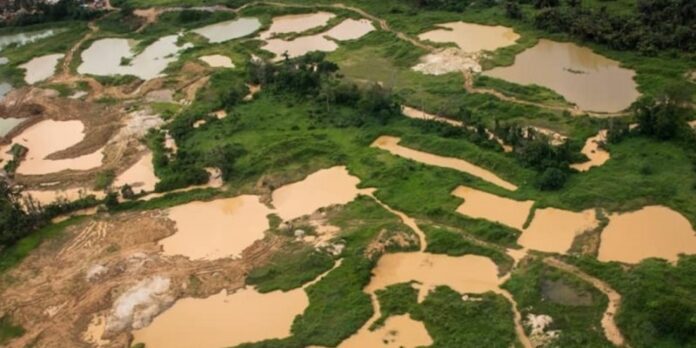Ghana will need billions of dollars to treat, reclaim, and restore vast degraded lands and water bodies affected by illegal mining activities over the years.
Professor Nana Browne Klutse, the Acting Chief Executive Officer of the Environmental Protection Authority (EPA), described the situation as an emergency and appealed to development partners for support.
Speaking to the Ghana News Agency on Tuesday, she hinted that a World Bank-funded project had helped reclaim some lands, but it was at a pilot stage, and the EPA would need funding to upscale.
“We have been approached by companies to help the country reclaim and restore, but the condition is that Ghana must pay for the technology after the pilot stage,” Prof. Klutse said.
She noted that the ideal situation would be to ensure that all mining companies, after securing permits, pay bonds that would be used to reclaim the lands.
“In our current dispensation, mining has occurred on vast lands by unidentified individuals who have absconded. At the moment, we have vast lands that have been degraded. We need to reclaim them, but we do not have the money to do that,” she said.
In line with the new Environmental Protection Act 2025 (Act 1124), which grants the agency greater authority, Prof. Klutse said steps were being taken to increase its presence in local areas to ensure effective monitoring and enforcement of environmental laws.
“We realised that currently, the Authority’s eyes are not everywhere, but soon we will establish offices at the district level to educate the public, guide people on their undertakings, and enforce laws where necessary to ensure compliance,” she stated.
Prof. Klutse assured the public that they would soon see water bodies being restored.
Illegal gold mining has been wreaking havoc in southern Ghana for years, particularly in resource-rich regions such as the Upper Offin sub-basin.
According to a study by the International Water Management Institute, these areas—once celebrated for their dense forests and flourishing cocoa plantations—now face severe land degradation, declining agricultural yields, and polluted water bodies.
In 2024, the Centre for Remote Sensing and Geographic Information Services, through the SERVIR West Africa programme, revealed that more than 670 square kilometres of land—an area comparable to the size of Singapore—had been destroyed by illegal mining.
High water turbidity, which measures the amount of suspended solids in water from galamsey, harms water quality, ecosystems, and human health.
In March last year, Ghana Water Limited raised concerns over challenges in treating water for the people of Sekondi-Takoradi due to high turbidity levels.
The Daboase Water Treatment Plant, which initially had to handle only 100 Nephelometric Turbidity Units (NTU) at the time of its construction, is now grappling with 7,000 NTU.
This has resulted in frequent machinery breakdowns and increased costs for water treatment chemicals.
Turbidity levels from galamsey have been recorded as high as 14,000 NTU, far exceeding the 2,000 NTU limit.
Toxic chemicals from illegal mining also contaminate water bodies, forcing people to seek alternative water sources that are either expensive or unsafe.
High turbidity also causes algae blooms, which disrupt food chains and ecosystems.
Research has also linked water pollution from galamsey to chronic diseases such as kidney failure, birth defects, and cancer.
Major rivers, including the Pra, Ankobra, Birim, Offin, Densu, and Oti, have all been polluted by illegal mining activities.
ALSO READ:


